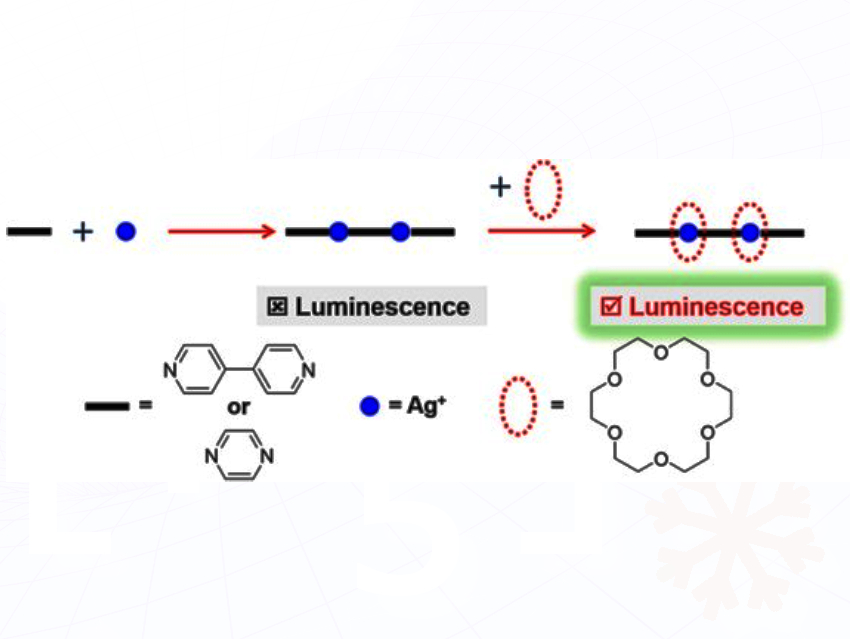Silver(I) coordination polymers (Ag(I)CPs) have attracted considerable attention in the field of optical materials due to their flexible structures and tunable optoelectronic properties. However, their practical application has long been limited by low luminescence efficiency and solid-state quenching issues.
Liu Kuan-Guan, Wei Jianyu (Ningxia University, China), Yue Guozong (Institute of Materials China Academy of Engineering Physics, China), and Jean-François Harlet (University Rennes, France) reported two one-dimensional silver coordination polymers Ia/Ib{[(18-C-6)Ag(bpy)]·X}∞ and IIa/IIb{[(18-C-6)Ag(pyz)]·X}∞ with bpy = 4,4′-bipyridine; pyz = pyrazine; X = BF4− (Ia, IIa), CF3SO3− (Ib, IIb).
By using 18-crown-6-ether (18-C-6) as a macrocycle to isolate silver ion chains, the researchers achieved strong green phosphorescence (with a quantum yield of up to 35.8% for IIb) in linear silver coordination polymers (Ag(I)CPs) for the first time, along with a significant aggregation-induced emission (AIE) effect. Subsequently, leveraging the excellent solubility of IIa, the team mixed it with commercial resins to create luminescent inks, demonstrating its practical potential in optical devices.
This study provides a new method for constructing one-dimensional Ag(I)CPs with excellent photoluminescence and AIE behavior, opening up new prospects for Ag(I)CPs in future functional optical applications.
- Crown-Ether-Directed Assembly of One-Dimensional Silver(I) Coordination Polymers With Dramatically Enhanced Photoluminescence,
Xiaojiao Yang, Xiao-Lin Ye, Shu-Han Bao, Dong-Nan Yu, Wenya Jiang, Bintao Wu, Shuaiqi Wang, Kangzhou Wang, Tang Yang, Guozong Yue*, Samia Kahlal, Jean-Yves Saillard,
Aggregate 2025.
https://doi.org/10.1002/agt2.70092




